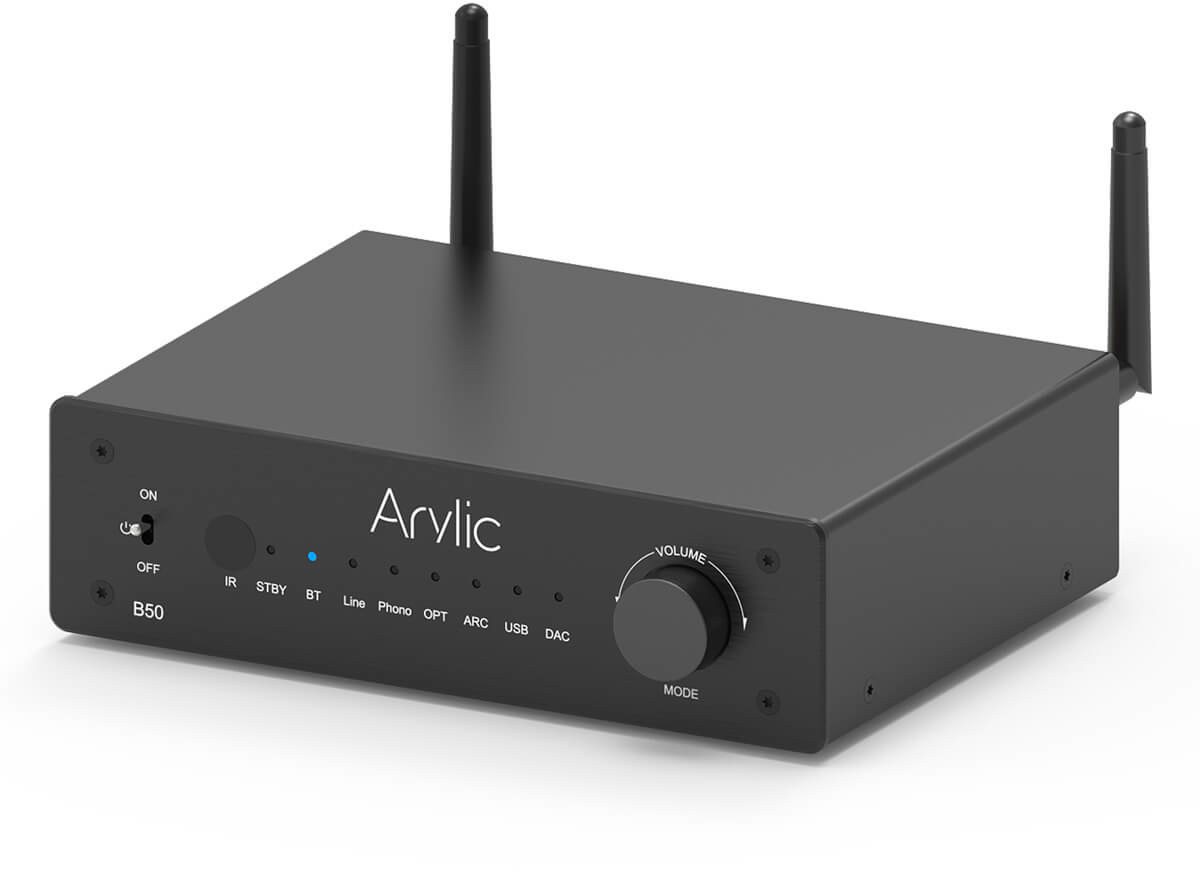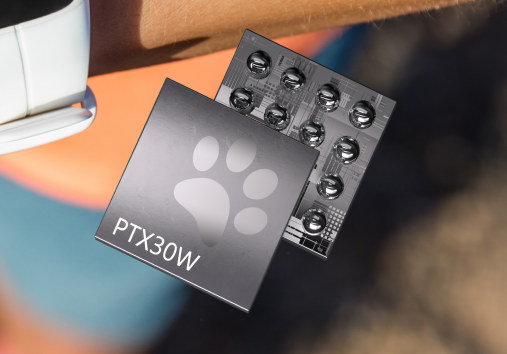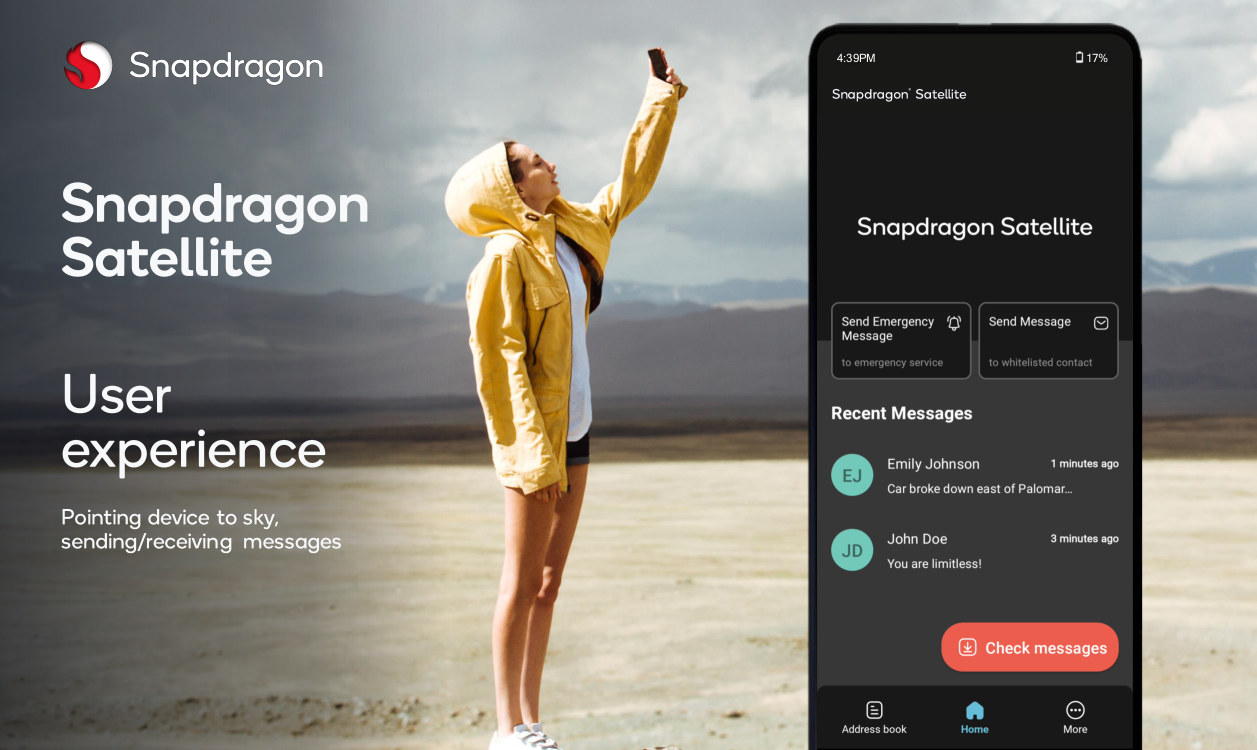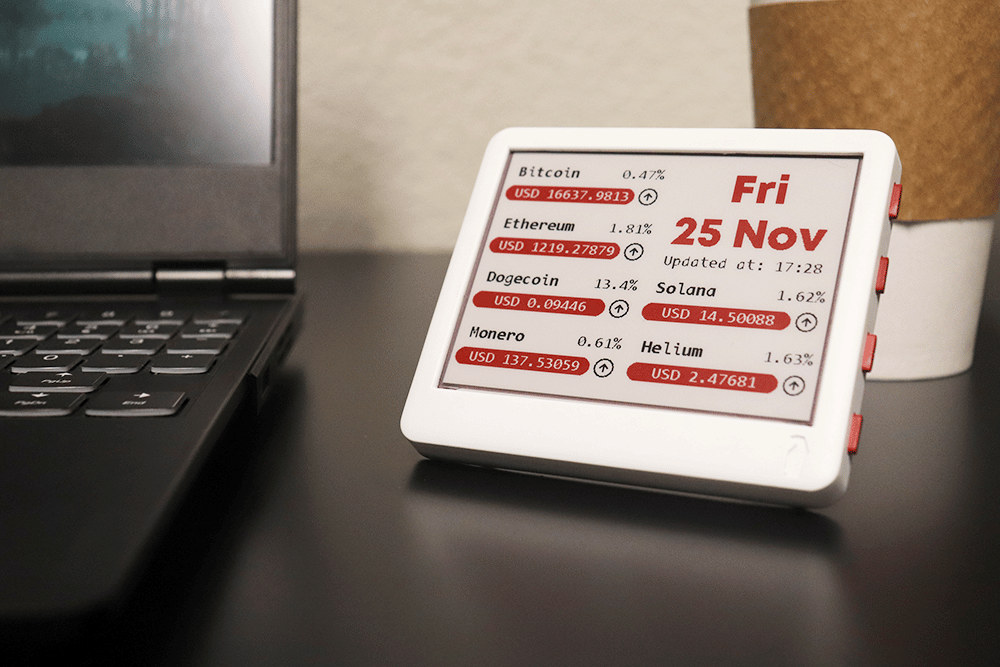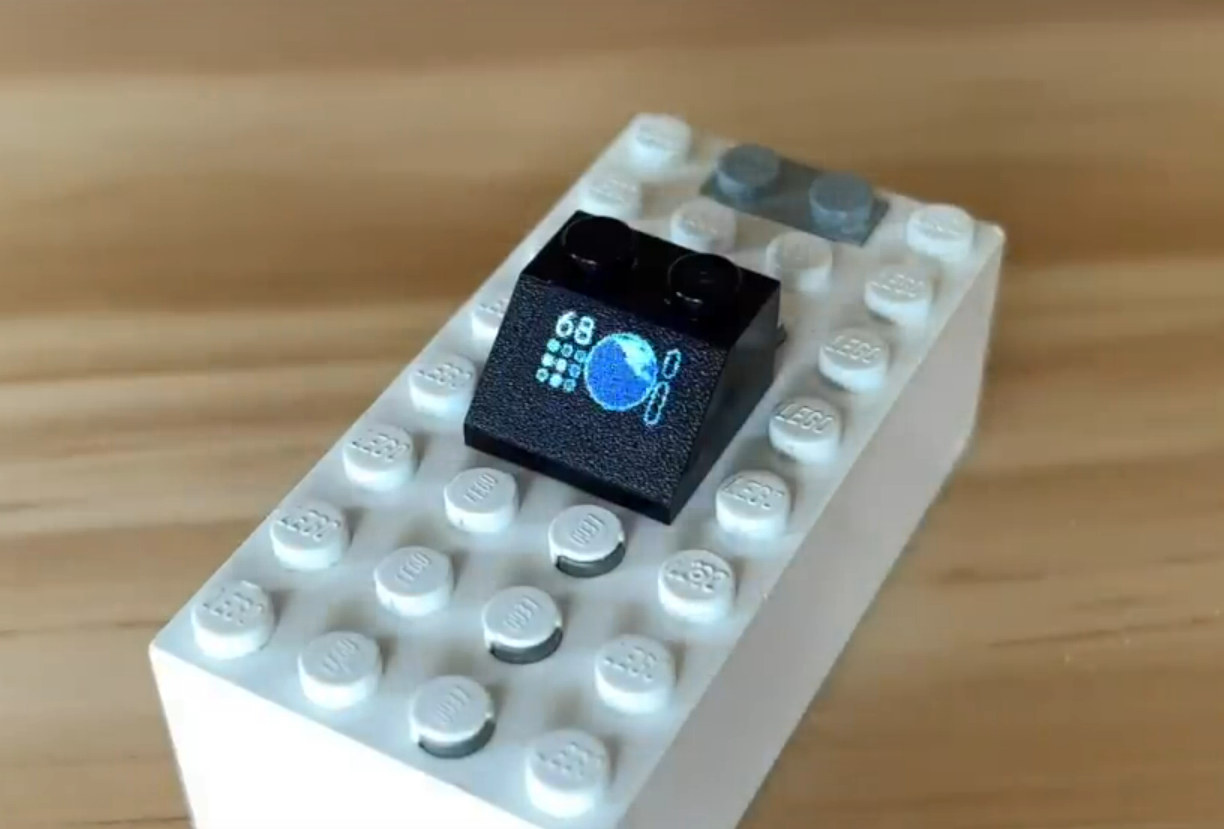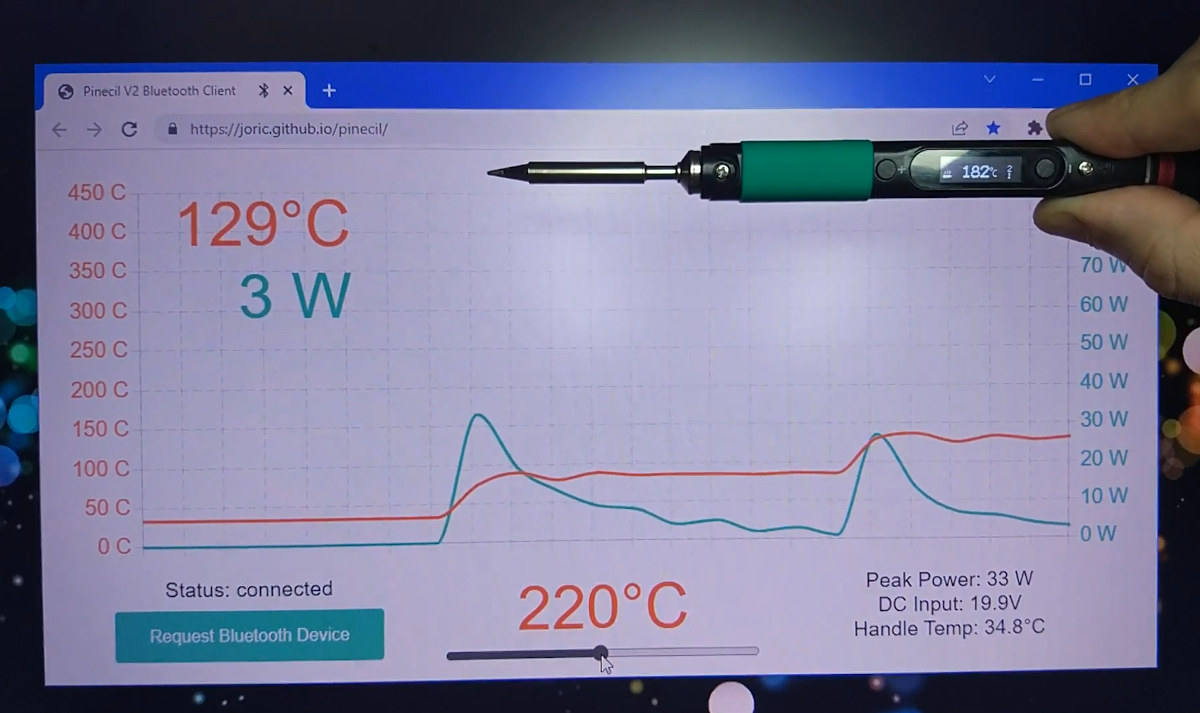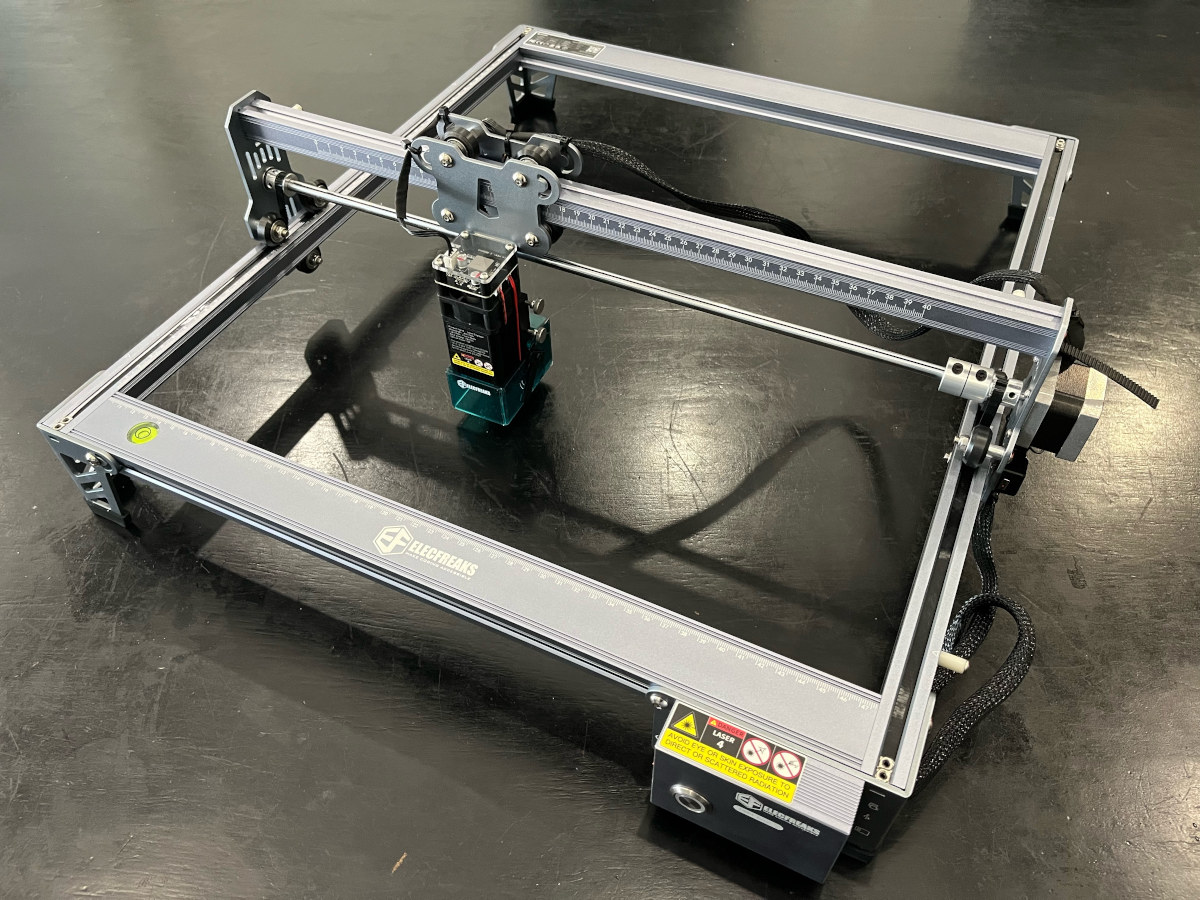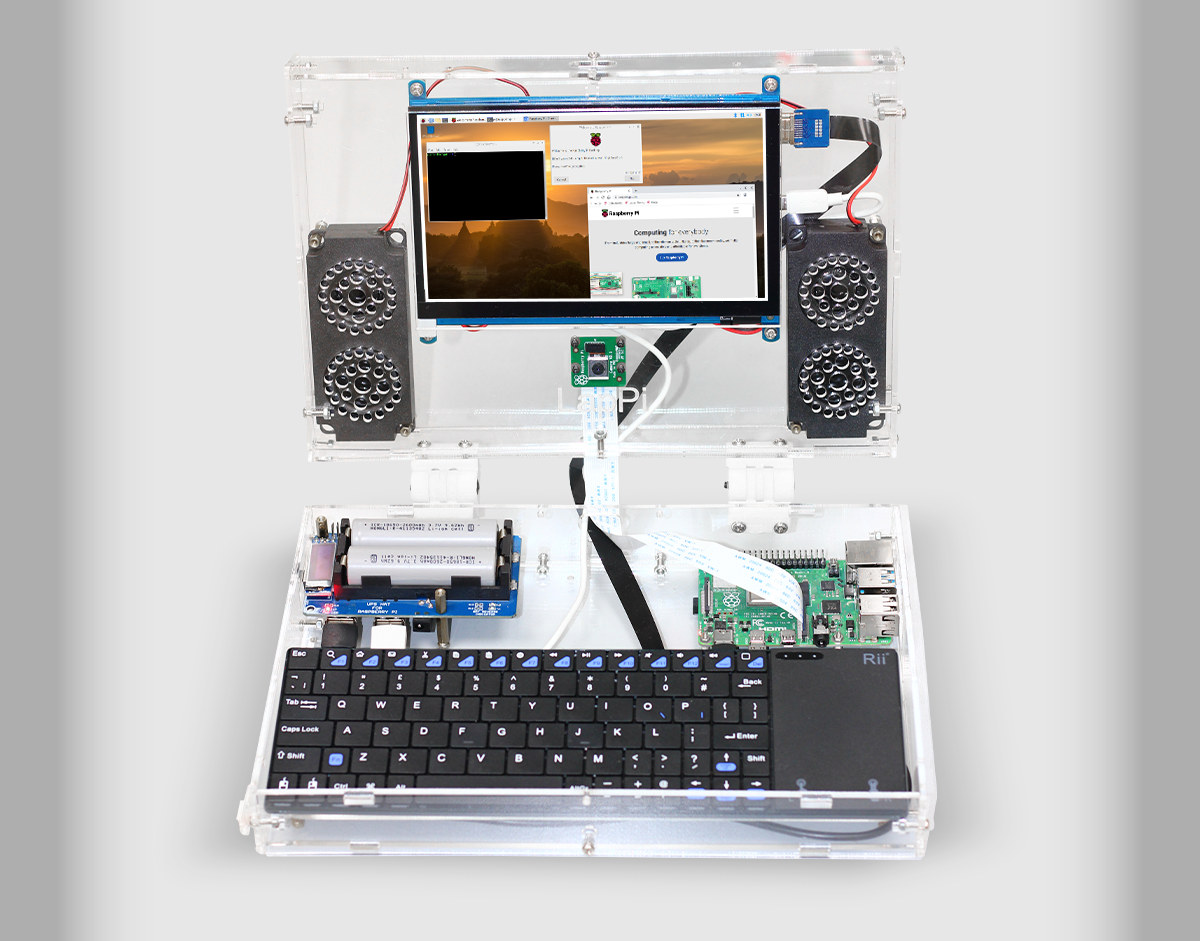Arylic B50 is a Bluetooth 5.2 stereo amplifier with an audio transmitter based on Qualcomm QCC3040 low-power Bluetooth Audio SoC that’s typically used in wireless earbuds. The all-in-one Bluetooth amplifier supports aptX HD audio transmission and reception, can handle two Bluetooth sources or two Bluetooth speakers or earbuds, and offers a wide range of interfaces including HDMI ARC, Phono in, RCA in, optical S/PDIF in, subwoofer out, and more. The system can also be connected to two wired speakers up to 50W @ 4 Ohms. Arylic B50 specifications: SoC – Qualcomm QCC3040 with 32-bit application processor @ 32 MHz, 32-bit system processor @ 32 MHz, Kalimba DSP @ 120 MHz, Bluetooth 5.2 and aptX HD support. Bluetooth Version 5.2 with up to 15m range Transmit – 2x Bluetooth Tx for up to 2 Bluetooth speakers or earbuds Receiver – 2x Bluetooth Rx for up to 2 Bluetooth transmitter devices Supported […]
Panthronics PTX30W is a 1W NFC wireless charging listener IC
Panthronics PTX30W is an NFC wireless charging listener chip that can receive up to 1W as per the NFC Wireless Charging (WLC) specification unveiled in 2020 and integrates a power management unit and a Li-Ion battery charger. Offered in a compact 3.2mm2 (1.78 x 1.78 mm) WL-CSP package, the PTX30W will enable small battery-powered products, such as smartwatches and other wearables, to be charged over NFC. The chip can operate in standalone mode or connected to a host microcontroller, and the company claims it is around four times smaller than existing designs based on multiple discrete components. PTX30W features and specifications: Integrated NFC Wireless Charging Listener device Efficient Active Rectifier RF interface according to Forum Type 2 Tag Li-Ion battery charger with charging current from 5mA to 250mA MCU LDO with 1.8V or 3.3V output, up to 50mA Embedded power negotiation logic High-efficiency NFC wireless charging listener IC with up […]
Qualcomm Snapdragon Satellite enables two-way messaging using the Iridium network
You may soon be able to get true global coverage even in remote areas thanks to Qualcomm Snapdragon Satellite which will offer pole-to-pole coverage and two-way messaging for emergency use, SMS texting, and other messaging applications. Qualcomm made this possible through a partnership with Iridium to bring satellite-based connectivity to next-generation premium Android smartphones starting with devices based on Snapdragon 8 Gen 2 Mobile Platform, while emergency messaging support was done in collaboration with Garmin. You’ll just need to point your phone to the sky to send and/or receive messages, and the connection should take place within a few seconds. Note it can only be used for text, and the bandwitdh would not be sufficient for audio, pictures, and videos. The solution relies on Snapdragon 5G Modem-RF Systems such as the Snapdragon X70 modem to connect to the Iridium low-earth orbit satellite constellation using the L-band spectrum (1 to 2 […]
Merlot is an open-source hardware tricolor wireless E-paper display
paperd.ink Merlot is a tricolor E-paper display with an open-source hardware control board based on ESP32 wireless SoC that is programmable with Arduino, MicroPython, or the ESP-IDF framework. We first wrote about the paperd.ink 4.2-inch ESP32-based monochrome e-Paper display last year, but the company has now refined its design with the “paperd.ink Classic” replacing the 3D printed enclosure with a vacuum cast enclosure and adding a 1,900 mAh battery. They also launched a new model, the Merlot, based on the same design but with a display supporting three colors: black, white, and red. Merlot specifications: Wireless module – ESP32-WROOM-32 module with ESP32 dual-core processor, 4 MB SPI flash, 2.4 GHz WiFi 4 & Bluetooth LE connectivity Storage – MicroSD card slot for storing images, files, etc Display – 4.2″ tricolor e-Paper display with 400 x 300 resolution; full refresh: ~ 17 seconds; partial update: also 17 seconds… USB – 1x […]
LEGO brick with Raspberry Pi RP2040 runs Doom
James Brown (aka Ancient) has built a tiny computer inside a LEGO brick with a Raspberry Pi RP2040 microcontroller and a 0.42-inch OLED display. And yes, it runs Doom. So finally, the LEGO minifigures have access to a computer suitable for their size :). James did not post a lot of information to reproduce the build by yourself, but he still released the “uGrey” code, written in Micropython, to display greyscale on a monochrome OLED. We can learn from the design in a mesmerizing video (embedded at the end of this post) showing how he made a Raspberry Pi RP2040 computer fit into a LEGO brick. The tiny design is comprised of five main boards/modules: Raspberry Pi RP2040 module The micro USB module Two side modules with other components A 0.42-inch OLED display with 72×40 resolution (SSD1306) Since soldering the four modules together by hand only would be really challenging, […]
Pinecil V2 Bluetooth LE soldering iron gets a web interface
It’s now possible to make use of the Pinecil V2 soldering iron‘s Bluetooth LE connectivity through a web-based interface used to monitor and/or set the temperature and power of the RISC-V soldering iron. When the Pinecil V2 soldering iron was launched with a Bouffalo Lab BL706 RISC-V Bluetooth microcontroller last summer, we were told there were main potential cases to make use of the Bluetooth LE features: OTA firmware upgrade and remote telemetry and control. The latter is now being taken care of by Joric who has written a web application to visualize telemetry data and even control the temperature of the soldering iron. To be able to use the Bluetooth features, you’ll first need to install the latest Pinecil V2 firmware with blisp flashing utility before going to https://joric.github.io/pinecil to pair your soldering iron as explained in the wiki. Note the implementation relies on the Web Bluetooth API which […]
TOOCA Laser L1 review – An affordable 5W laser engraver
ELECFREAKS’ TOOCA Laser L1 is an affordable 5W laser engraver with a sturdy yet lightweight structure and that can engrave various materials including metals. It’s easy to use with a one-button press and suitable for education in schools. TOOCA Laser L1 laser engraver unboxing The laser engraver comes as a kit with components that can be easily assembled. It was well-packed with little risk of being damaged during transport. It also includes tools and instructions for assembly, and you don’t need any extra tools to complete the assembly. TOOCA Laser L1 specifications The machine measures 568x632x198 mm, weighs 3.2 kg only so it can easily be carried around, and offers a 400×415 mm working area. It works with Windows and macOS and only requires 24V power available through the provided power adapter. A wide range of file types are supported, and the device can engrave many types of materials and […]
LapPi 2.0 – A DIY laptop for Raspberry Pi 4 and other single board computers (Crowdfunding)
The LapPi 2.0 is a DIY laptop kit with an acrylic enclosure, a UPS HAT with a 18650 battery holder, and off-the-shelf parts including speakers, a touchscreen display, a Raspberry Pi camera, and a wireless keyboard that’s suitable for the Raspberry Pi 4 and pretty much any other small single board computer from Radxa, Orange Pi, Banana Pi, FriendlyElec, Hardkernel, and others. We’ve seen several Raspberry Pi laptops over the years with the CrowPi L and Pi-Top, and I have to say the LapPi 2.0 is not the most eye-pleasing or sophisticated design, but at least, it’s versatile and not limited to the Raspberry Pi family. LapPi 2.0 kit content and highlights: Display – 7-inch 5-point capacitive touchscreen IPS display with 1024×600 resolution support for audio output via 3.5mm audio jack and 4-pin header Camera – Official 8MP Raspberry Pi Noir camera with night vision support Audio – 2x 5W/8 […]


